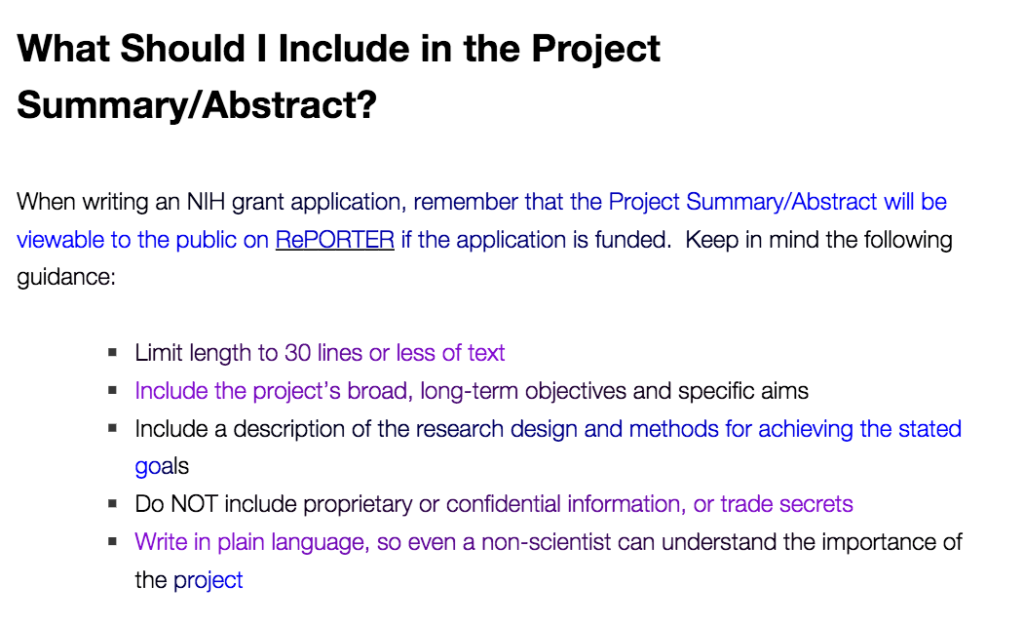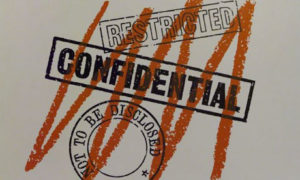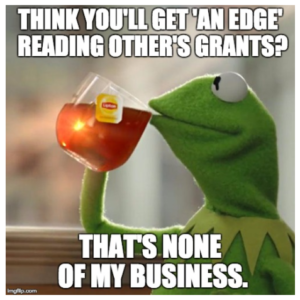This week, journalists Teresa Carey and Aylin Woodward revealed a well hidden secret used to get access to academic’s research grants. Like many researchers, I was under the (mistaken) belief that the public was only privy to the short grant abstract using NSF or NIH Reporter. Indeed, both agencies point out that the Project Summary/Abstract need to be geared for the public and stripped of any confidential information.

Pass me those Aims, will you?
Carey and Woodward submitted a Freedom of Information Act filing asking how many individuals were requesting full grant applications. They found over 13,000 FOIA requests for full grant proposals were submitted in the last 10 years.
It came as a surprise to some of the researchers Carey and Woodward contacted that their applications had been made public. According to their piece, several scientists felt information that was shared was confidential and should have been redacted. Others were just stunned their grants were publically available. NIH makes a point of directing individuals who are interested in finding out more about funded projects via FOIA to the limited data on NIH Reporter.

Summary isn’t the only public part, as it turns out.
My science communicator hero, Terry McGlynn, wrote about his experience with having his funded applications subject to FIOA and being ‘threatened’ with a FOIA filing. McGlynn also spoke to Carey and Woodward and was not happy about how his comments were used. In his Small Pond article, McGlynn took issue that he was somehow incensed by FOIA writing:
What is a jerky move is contacting someone asking for a copy of their grant,
and then saying that if you don’t want to hand it over, they’ll just FOIA it anyway.
And an even bigger jerky move, by the way, is saying things about people
that you know aren’t true. I’ve learned my lesson the hard way: if a journalist
from a site that rhymes with Fuzzbead contacts you about a piece, think more than twice.
Frankly, I’ve seen McGlynn do things on Twitter when he’s incensed. This isn’t a thing that he seemed incensed about. But who knows the rage that lives within McGlynn? What McGlynn did do in his blog was share some very thoughtful comments on why he won’t engage with third hand parties in an asymmetric relationship in which they demand he share his funded proposals.

Someone at NIH and NSF is going to be using the red crayon a lot.
Even if McGlynn isn’t so incensed that he had to blog about it (as Buzzfeed states), there are absolutely going to be some incensed scientists when they find out this is happening. Grant proposals are born of inspiration and years of brutally hard work. Having individual or institutional competitors access your plans for the next five years is icky. Legal but icky. We are, after all, paid by taxpayers and you can’t expect the money without sharing what you do. It would be like a president suggesting tax reform and never having revealed their taxes. ?

The idea of having your funded applications nosed around in by competitors can conjure up the feeling one gets when you realize there is a group of kids who have access to all the past exams in a class. Sure, you can hunt down all the kids with the material from past years but one would hope you would just study hard and do your best. But students can be sleazy, so many of my colleagues just share past exam material openly so everyone can have the same ‘advantage.’
I’d frankly be happier knowing which grant and manuscript authors used professional writing services in the work they are submitting. But that’s a different blog.
